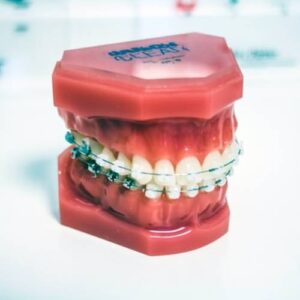Crowns
The outside of each tooth is made of enamel, which is extrememly hard. Although teeth are strong and difficult to break, trauma (such as a fall) may chip or break them.
Tooth decay may also severely weaken a tooth, with a high risk that the tooth may fall apart. Root canal therapy where the pulp of the tooth containing nerves and blood vessels is removed, can also weaken a tooth, especially if it has large fillings. Teeth may also wear down over time.
In these cases, a crown is often the best way to save a tooth and strengthen it. A crown fits over the existing natural tooth and replaces the natural crown, the part of the tooth seen above the gums.

Bridges
Bridges replace one or more missing teeth. They consist of an artificial tooth anchored to the natural teeth on each side of the gap. If a tooth is lost through an accident, or is too badly decayed to save with a crown, a bridge may be the treatment of choice. Implants are also another way to replace missing teeth.
Crowns and bridges are usually made of porcelain and gold alloy. Porcelain is strong and can be made to match the colour of the natural teeth. They can be cleaned if there is staining.
On your first visit, the dentist takes an impression of the upper and lower teeth to make a permanent record of their appearance and how they fit together when your jaws are closed (known as occlusion). To make an accurate reproduction of your upper and lower teeth, a jaw-shaped tray is filled with a soft gel-like material, pushed onto your teeth and held in place to set for three to five minutes.
The area is then numbed with a local anaesthetic, the tooth is shaped, using a drill, making it smaller by one to two millimeters. After shaping, another more accurate impression is taken to record changes to the prepared tooth.
The impressions are sent to a dental technician who makes the crown according to specifications set by the dentist. To protect the prepared tooth, a temporary crown is attached to the reshaped tooth with temporary cement.
At the next appointment, the temporary crown is removed and the new crown is placed over the reshaped tooth, if the crown matches the other for colour and shape then it is cemented with dental cement. The dental cement usually sets after one hour and reaches full strength in 24 hours.
